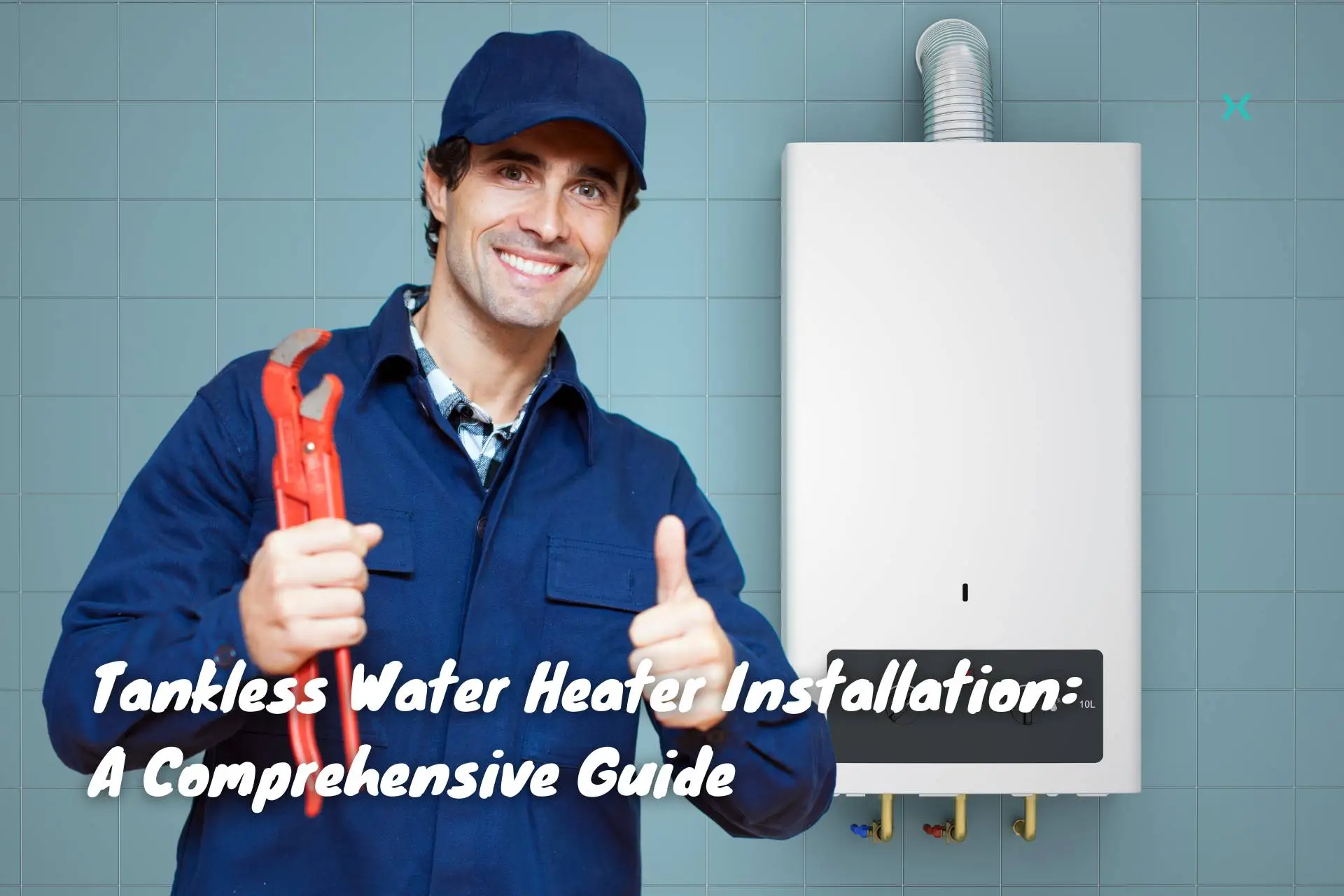Table of Contents
Overview of Tankless Water Heaters
Tankless water heaters have gained widespread popularity due to their energy efficiency, compact design, and long-term cost benefits.
Unlike traditional designs, such as power vent water heaters that constantly heat and store water, tankless models provide hot water on demand, reducing energy consumption by only heating water when needed. This results in substantial energy savings, making them environmentally friendly and cost-effective in the long run.
The space-saving design is another key factor driving their adoption. Tankless water heaters are compact and can be mounted on walls, freeing up valuable floor space compared to their bulky tank counterparts. This is especially advantageous for homes with limited space, promoting versatility in installation.
Amid increasing interest in eco-friendly living and energy conservation, tankless water heaters align with the growing demand for energy-efficient home appliances. Homeowners are increasingly prioritizing sustainable solutions that reduce their carbon footprint and lower utility bills. As a result, electric models have become a sought-after choice.
This shift reflects a broader trend towards environmentally conscious choices in household technologies, illustrating the evolving landscape of home appliance preferences.
Essential Points of Tankless Water Heater Installation
Before a tankless water heater installation, the first order of business is to determine if it is a gas or electric tankless water heater. This could either be a natural gas, propane, or electric water heater.
However, compared to the national average, the overall cost of a tankless model will be quite a bit higher than the non-condensing units such as traditional heaters. Despite these challenges, the long-term benefits often outweigh initial expenses, with energy savings and extended lifespan contributing to cost-effectiveness.
Considerations involve the need for proper sizing to meet the household’s hot water demand, as undersized units may struggle to deliver sufficiently during peak usage. Water quality and maintenance are also crucial factors, as hard water can affect performance, and regular maintenance is essential for optimal functionality.
Understanding Tankless Water Heaters
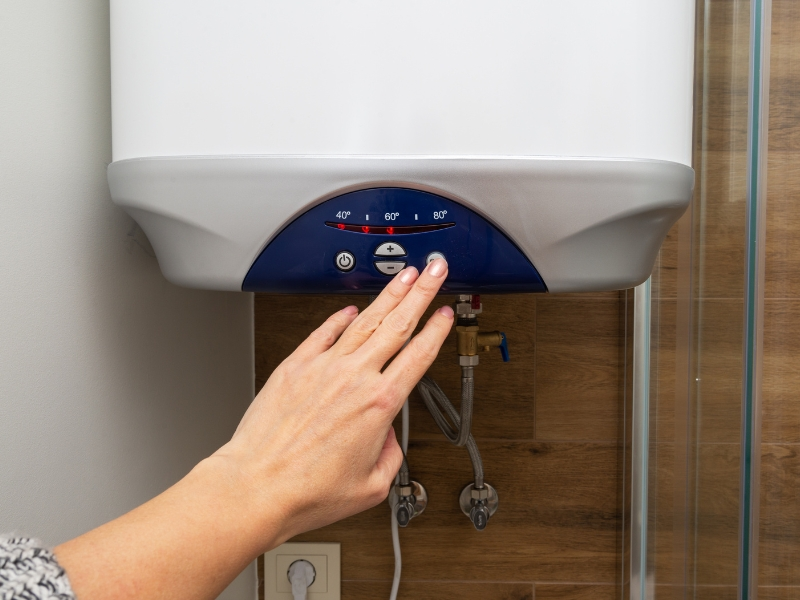
What is a Tankless Water Heater?
A tankless water heater, unlike traditional tank-based heaters, operates on the principle of on-demand heating. Instead of storing and continually reheating a large volume of water in a tank, tankless models heat water instantaneously as it flows through the unit.
When a hot tap is opened, cold water enters the heater and is swiftly heated by a gas burner or electric element, providing a constant and immediate hot water supply. This design eliminates the standby heat losses common in traditional units, making a tankless water heater more energy-efficient.
The on-demand approach ensures that hot water is available whenever needed while also contributing to a more compact and space-saving design, as there is no need for a large storage tank.
Differences between Tankless and Traditional Water Heaters
Traditional tank units and tankless heaters differ fundamentally in their operation and design.
The conventional gas water heater features a large tank that constantly heats and stores a significant volume of water, ready for use. This approach maintains a reservoir of hot water but can result in standby heat losses, consuming energy even when not used.
In contrast, a tankless gas water heater heats water on demand as it flows through the unit, eliminating the need for a storage tank. This on-demand system is more energy-efficient as it avoids standby losses, providing hot water instantly and only when needed.
📗 Related Reading: Tank vs Tankless Water Heater: The Great Water Heater Debate
Pre-Installation Considerations
Sizing a Tankless Water Heater
Determining the right size for a tankless water heater involves assessing the household’s hot water demand and peak usage patterns.
Calculate the total flow rate needed by considering simultaneous hot water activities, such as showers, laundry, and dishwashing. Determine the temperature rise required—the difference between the incoming cold and the desired hot water temperature.
Consult the unit’s specifications, typically measured in gallons per minute (GPM), and select a tankless water heater with a flow rate that meets or exceeds your calculated needs. Factor in the tankless unit’s efficiency, as this influences its real-world performance.
Consider the incoming water temperature based on your location, as colder climates may require a larger temperature rise. Choosing a unit that aligns with peak demand and regular usage is crucial to ensure a consistent and reliable hot water supply.
If in doubt, seek professional advice to ensure accurate sizing and optimal performance.
Understanding Energy Requirements
Tankless water heaters generally have higher energy requirements, measured in British Thermal Units (BTUs), than traditional models. This is because tankless water heater units must rapidly heat water on demand. While this may increase peak energy demand, the overall energy consumption can be lower due to the elimination of standby losses associated with tank-based heaters.
However, the higher BTU demands of tankless heaters may necessitate home energy infrastructure adjustments.
Upgrading the propane or natural gas line may be required to accommodate the increased load during peak usage. Homeowners should assess the capacity of their current infrastructure and consult with professionals to ensure it meets the demands of a tankless system.
Installation Process
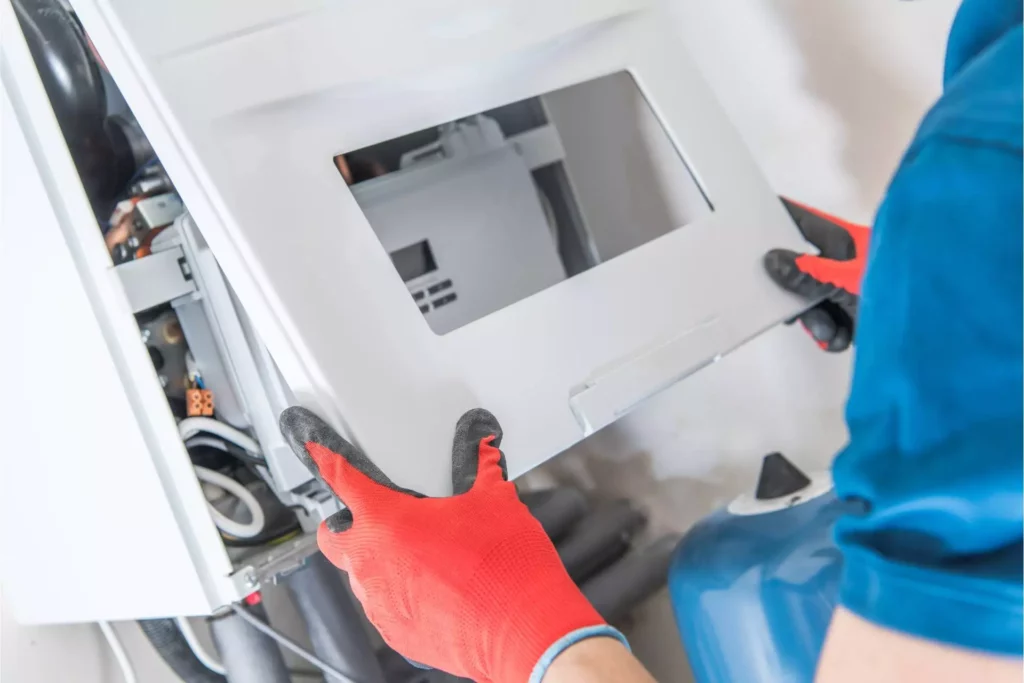
Mounting and Venting Requirements
Remember, this is just a guide for installing a new tankless system, and we are using the national average in terms of how the units tend to be installed. Properly mounting a tankless water heater involves several key steps to ensure safety, efficiency, and compliance with local gas, electrical, or building codes.
Begin by selecting an appropriate location, considering proximity to gas or electrical connections and accessibility for maintenance.
Install the unit on a sturdy, non-combustible surface, following manufacturer guidelines for clearances.
Next, ensure proper venting to expel combustion gases safely. Exhaust vent options include direct venting through an exterior wall vent pipe or using a dedicated venting system. Adhere to local building codes and manufacturer specifications regarding venting materials and vent pipe distances.
Maintain proper spacing for ventilation and access to controls. Install gas lines or electrical connections according to local codes, and consider the need for a sediment trap in the natural gas line (also called a drip leg or dirt pocket) to prevent debris from reaching the unit.
For optimal performance, consult the old water heater manufacturer’s guidelines for installation specifics, including recommended pipe sizes, water hardness considerations, and maintenance requirements.
Consider professional installation by a plumbing company to ensure compliance with safety codes and proper functionality, promoting a safe and efficient tankless water heater installation and setup.
Securing the Gas and Water Connections
It is crucial to establish safe gas and water connections for a tankless water heater installation for its reliable and efficient operation. Before starting the installation, begin by turning off the fuel source, which is the main gas supply line and the main water pipes.
Use a properly sized, flexible, corrosion-resistant propane or natural gas line for gas connections. Apply a gas-approved thread sealant to threaded connections to ensure a secure and leak-proof joint.
After connections are made, perform a thorough gas leak test. This can be as simple as using a soap and water solution to identify any escaping gas.
Follow local plumbing codes and use quality materials such as PEX or copper pipe for water connections. Employ dielectric unions to prevent corrosion and mineral buildup at the connections between different metals. Install shut-off valves and consider pressure relief valves for safety.
During both gas and water installations, check for leaks systematically. Tighten connections as needed and rectify any issues promptly.
Proper ventilation is also crucial for gas units, ensuring the safe expulsion of combustion byproducts. Consult local codes and the manufacturer’s guidelines for specific requirements regarding gas and water connections.
Professional installation is recommended to guarantee a leak-proof, efficient, and safe tankless water heater system.
Professional vs DIY Conclusion
Proper installation is critical, and the choice between professional and DIY installation hinges on expertise, overall installation cost, and adherence to safety and warranty requirements.
Professional installers bring valuable experience, ensuring compliance with codes and regulations, whereas DIY projects offer potential cost savings but require a strong understanding of existing plumbing and electrical systems.
Maintenance and Troubleshooting
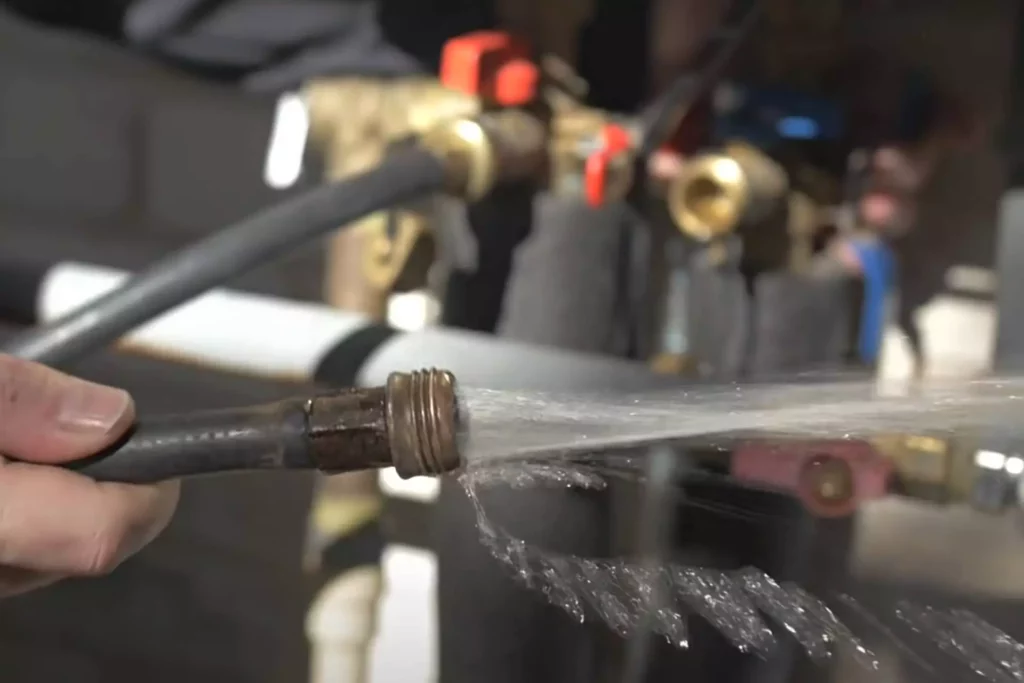
Compared to your old water heater or existing water heater, regular maintenance is essential for ensuring the optimal performance and longevity of your new tankless water heater. Here are some tips on maintenance practices and troubleshooting scenarios:
Maintenance Practices
- Descale Annually: Over time, mineral deposits can accumulate in the heat exchanger, affecting efficiency. Descale the unit annually using a descaling solution to dissolve these deposits.
- Check and Clean Air Intake: Ensure the air intake and exhaust vents are clear of debris, preventing blockages affecting combustion and ventilation.
- Monitor Water Quality: Hard water can lead to scale buildup. Maybe consider a water softener to reduce calcium buildup and prolong the unit’s lifespan.
- Flush the System: Periodically flush the system to remove sediment or debris that may accumulate in the water lines.
Troubleshooting Scenarios and Solutions
- No Hot Water: Check for error codes on the tankless water heater unit’s display. Inspect the gas line supply and ensure no blockages in the hot and cold water lines.
- Fluctuating Temperature: Adjust the temperature settings on the unit or check for simultaneous water usage exceeding the unit’s capacity. Consider upgrading to a higher-capacity model if needed.
- Ignition Failure: Ensure proper gas supply and ignition sequence. Check the fuel source, such as the shutoff valve or the regulator, if your house has higher-pressure gas. Tankless systems have an automatic gas valve, so do not try to light a pilot light. Check for error codes and consult the manufacturer’s manual for troubleshooting steps.
- Leaking Water: Inspect all connections for leaks, tighten fittings as needed, and check the pressure relief valve. Replace faulty valves if necessary.
- Unusual Noises: Flush the system to remove sediment causing noise. If the issue persists, consult a professional for further inspection.
- Error Codes Displayed: Refer to the manufacturer’s manual for specific error code meanings. Address the issues indicated, and if necessary, contact professional assistance.
Regular maintenance and prompt resolution of troubleshooting scenarios are key to maximizing the efficiency and lifespan of a tankless hot water heater. If uncertain or for complex issues, it’s advisable to seek assistance from a qualified plumber.
Cost Analysis
Initial Costs: The upfront costs of installing a gas tankless water heater are generally higher than traditional tank-based models. This includes the tankless water heater unit’s purchase price, additional components like venting systems, and professional installation expenses.
Tankless gas water heaters often require specific gas lines or electrical upgrades, contributing to the initial investment. However, regional variations in material and labor costs can impact the overall installation expenses.
Ongoing Operating Costs: Despite the initial investment, tankless water heaters can result in lower ongoing operating costs. Their on-demand heating approach eliminates standby energy losses associated with constantly heating a large tank of water.
This efficiency can translate to reduced energy bills over time. Additionally, tankless units typically have longer lifespans, requiring less frequent replacements than traditional tank water heaters do, contributing to long-term cost savings.
Potential Savings Compared to Traditional Water Heaters
Energy Efficiency: Tankless water heaters are more energy-efficient since they only provide hot water when needed. This results in substantial savings compared to traditional heaters continuously maintaining a hot water reservoir.
Longer Lifespan: Tankless units generally have a longer lifespan, often exceeding 20 years, compared to the 10-15 years typical of tank heaters. This longevity contributes to reduced replacement and maintenance costs.
Space Savings: Tankless water heaters’ compact design allows for versatile installation in tight spaces. This can lead to additional savings by avoiding the need for a dedicated utility room or large storage space.
Environmental Impact: Tankless water heaters’ efficiency aligns with environmental considerations, potentially resulting in lower carbon emissions and a reduced ecological footprint.
While the initial costs may be higher, the potential for ongoing energy savings, extended lifespan, and other operational efficiencies often make a tankless water heater a cost-effective and environmentally friendly choice in the long run. Calculating the payback period based on energy savings can provide a clearer picture of the long-term economic benefits.
Professional vs. DIY Installation
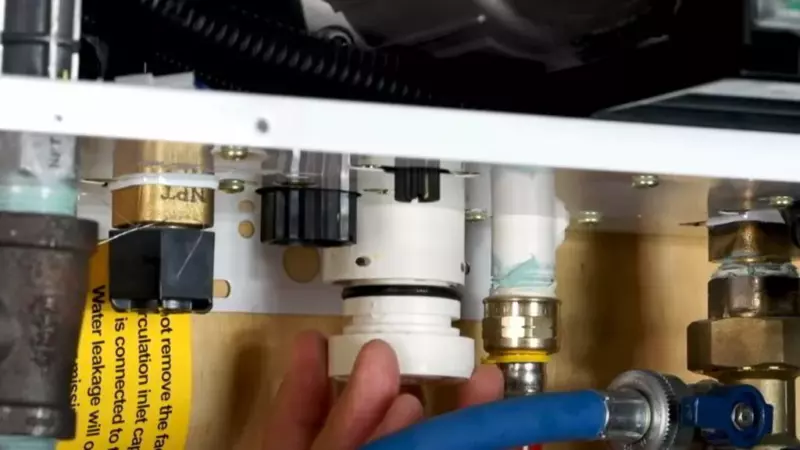
Professional Tankless Water Heater Installation
Pros:
- Expertise: Professional installers have the knowledge and experience to properly size, install, and configure tankless water heaters. They can assess the specific needs of the household, ensuring optimal performance.
- Compliance: Professionals are familiar with local building codes and safety regulations, such as proper gas piping and ensuring the installation meets all necessary standards.
- Safety: Trained plumbers can identify potential safety hazards, such as gas leaks or improper venting practices, and address them during installation, reducing the risk of accidents.
Cons:
- Cost: Professional installation costs more upfront than a DIY approach. This includes labor costs and potential additional fees for specific installations or adjustments.
- Scheduling: Coordinating with a professional installer may require scheduling flexibility, which could be inconvenient for some homeowners.
DIY Installation
Pros:
- Cost Savings: DIY installation can save money on labor costs. Homeowners with the necessary skills may find this approach more budget-friendly.
- Flexibility: DIY projects allow homeowners to work at their own pace, making adjustments and installations on their schedule.
Cons:
- Expertise: Installing a tankless water heater requires a good understanding of plumbing, gas, and electrical work. Inadequate expertise can lead to mistakes that compromise safety and performance.
- Warranty Concerns: Some manufacturers may void the warranty if the unit is not professionally installed. This could result in additional costs if issues arise.
- Safety Risks: Incorrect installation poses safety risks, including gas leaks or electrical problems. Poorly installed venting systems can lead to carbon monoxide exposure.
Considerations
- Complexity: DIY installation is feasible for those with strong DIY skills, but complex installations may be better left to professionals.
- Warranty: Check the manufacturer’s warranty terms regarding DIY installations and whether professional installation is a requirement for warranty coverage.
- Local Codes: Ensure that DIY installations comply with local building codes and safety regulations to avoid legal issues and ensure the safety of the installation.
In summary, while DIY installation can save money, weighing the risks and complexities is crucial. Professional installation provides expertise, compliance with regulations, and safety assurance but comes at a higher initial cost. Homeowners should assess their skills, local regulations, and warranty implications when deciding between professional and DIY installation.
Technological Advancements
Recent technological advancements in tankless water heaters have focused on enhancing efficiency, user convenience, and energy savings. Smart technology integration allows users to control and monitor their units through mobile apps remotely. This includes adjusting temperature settings, tracking energy usage, and receiving maintenance alerts.
Some models also feature advanced sensors that learn usage patterns, optimizing heating cycles for greater efficiency. Additionally, condensing tankless water heaters recover and utilize waste heat, further improving efficiency.
Regional Considerations
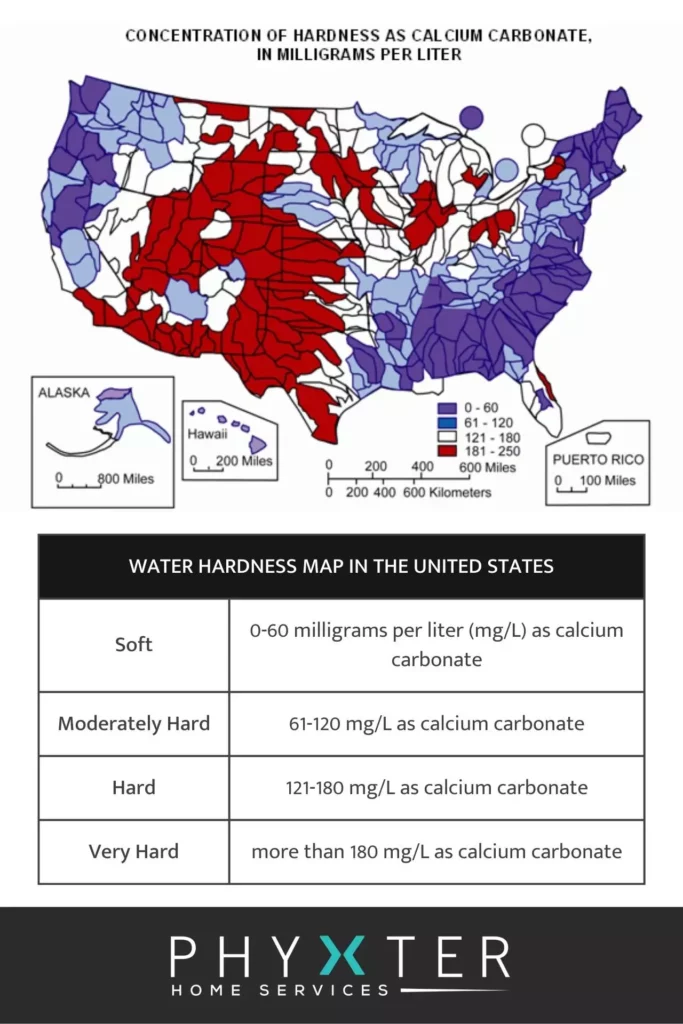
Climate
- Cold Climates: In colder regions, where the incoming water temperature is lower, selecting a tankless water heater with a higher temperature rise capability is crucial for maintaining optimal performance.
- Hot Climates: In hotter climates, where the incoming water is already relatively warm, the demand on the unit is lower, affecting sizing requirements.
Water Quality
- Hard Water Areas: Scaling can be a concern in regions with hard water. Some tankless water heaters come equipped with features or technology to mitigate the impact of hard water, such as self-cleaning mechanisms or scale detection systems.
Impact on Installation and Performance
- Smart Features: The integration of smart technology may influence installation requirements, including the need for a stable internet connection and familiarity with the associated mobile apps.
- Condensing Technology: Condensing tankless water heaters may require specific venting considerations due to the unique characteristics of their combustion process, impacting installation choices.
- Water Quality Solutions: In areas with poor water quality, additional filtration or water treatment systems may be recommended to prevent scaling and ensure optimal performance.
- Climate-Specific Sizing: The latest tankless models may offer improved performance in varying climates. Sizing considerations for gas models should account for regional temperature variations to ensure a consistent hot water supply.
- Environmental Impact: Technological advancements that enhance energy efficiency contribute to a reduced environmental footprint. Homeowners in eco-conscious regions may prioritize these features for both economic and environmental reasons.
Conclusion
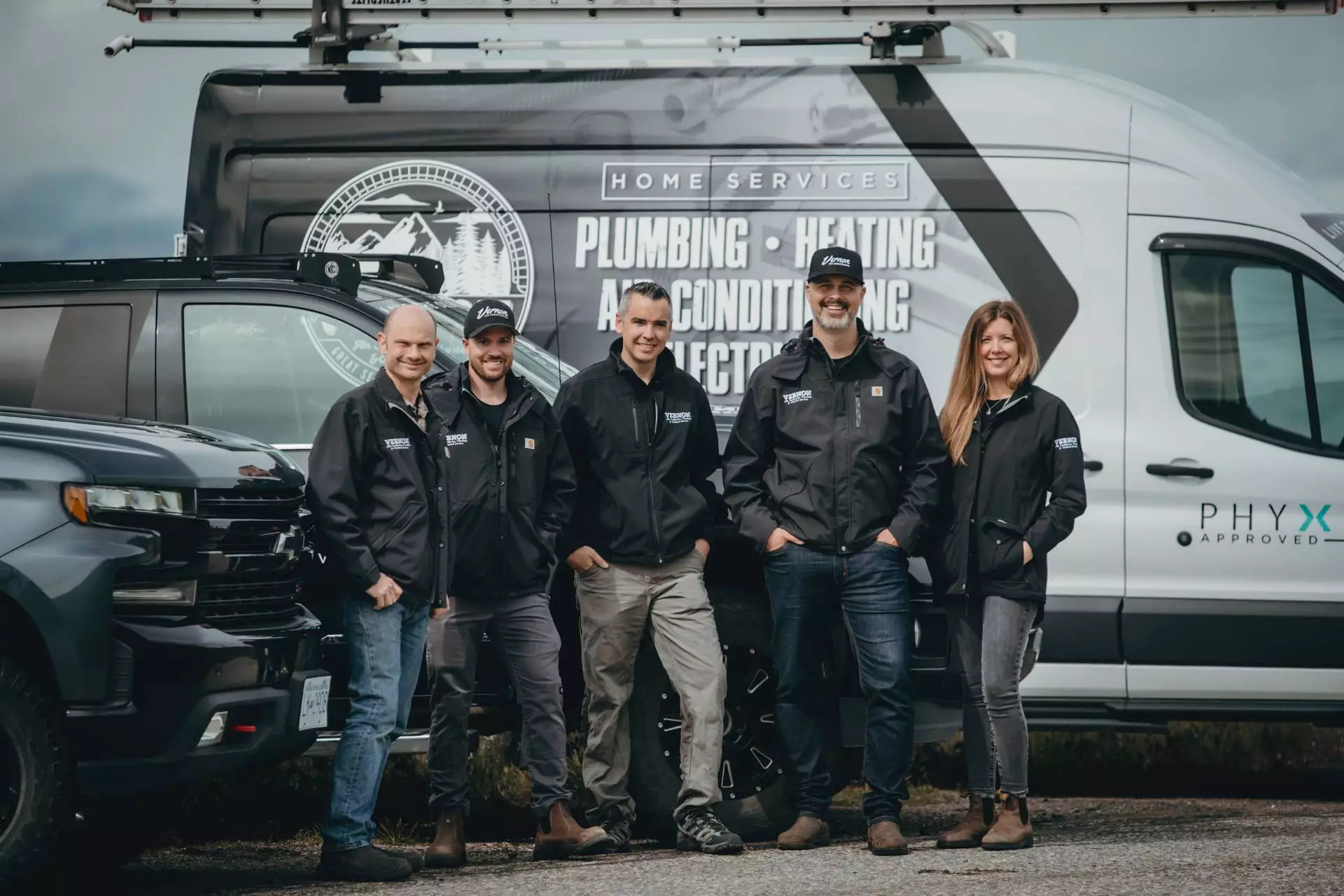
In conclusion, tankless water heaters are increasingly popular for their efficiency, compact design, and cost-effectiveness. They offer continuous hot water and stand out from traditional systems due to technological advancements like smart features and condensing technology. These innovations cater to specific needs like climate adaptability and energy efficiency.
When considering a tankless water heater, evaluating factors such as regional climate, water quality, and installation costs is crucial. A well-installed system offers long-term savings, environmental benefits, and reliable hot water.
This is where Phyxter Home Services’ expertise becomes invaluable. Renowned for their knowledge and high-quality service, Phyxter’s professionals excel in tankless water heater installations, tailoring solutions to each home’s unique needs. Their commitment to excellence ensures customer satisfaction and peace of mind.
Choosing Phyxter Home Services means more than just an installation; it’s a step towards sustainable and efficient home living. We encourage readers to contact Phyxter for their home service needs and explore our website for more insightful articles. Check if Phyxter services your area and connect with their exceptional services today. Your home deserves the best, and Phyxter is here to deliver.

